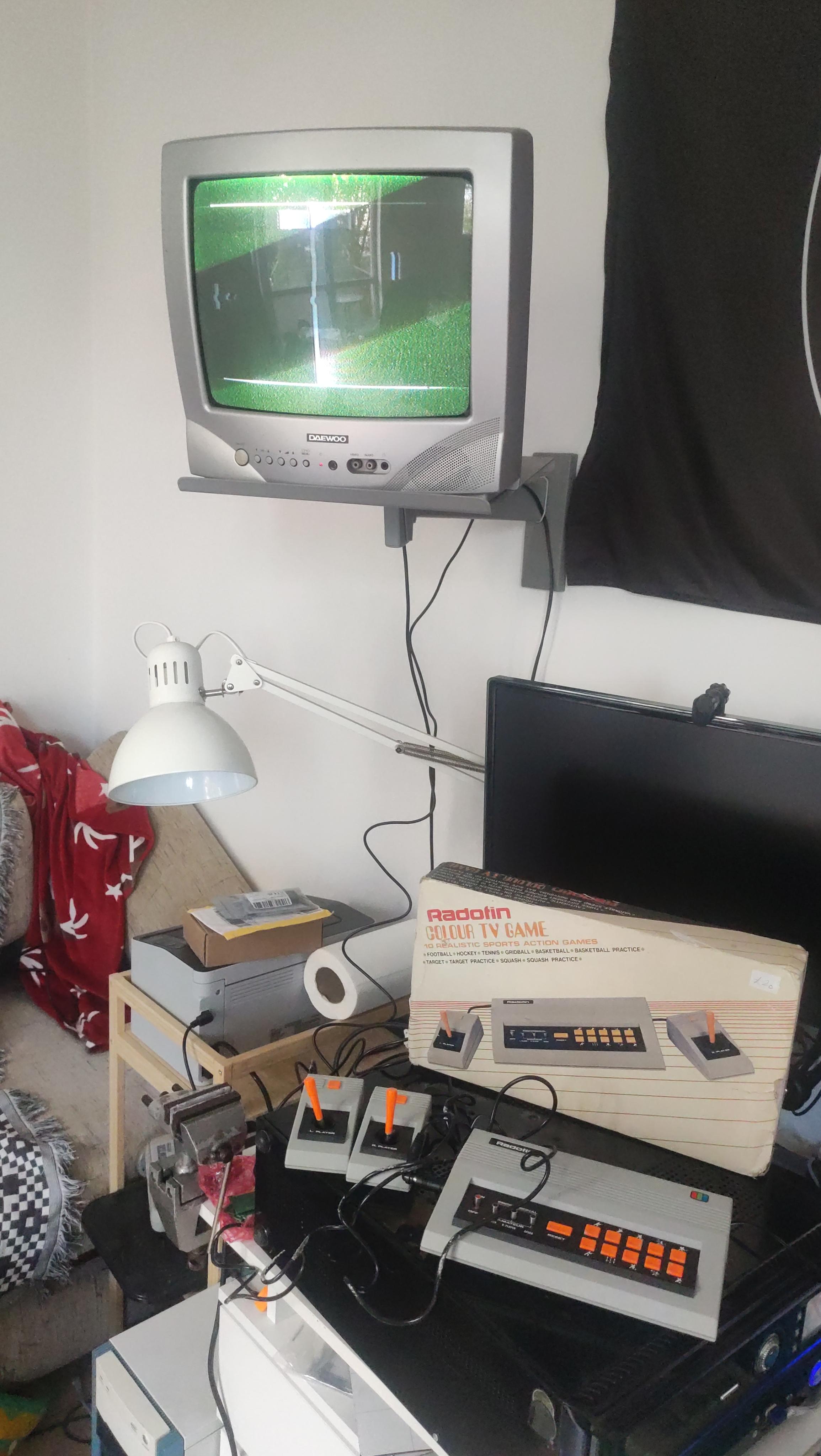How long did it take to download 45 years of updates?
The very first pong game system did not use software, which blows my mind. OP’s does not appear to be the same version but it’s possible this it also does not use software.
Am I too stupid…how did it work?
I can’t really give a great answer to that, pretty sure it was all just electrical hardware. I’m curious now, I’ll look around and let you know if I find something.
Edit: yep, no code, just circuits. Here is the original circuit diagram from Atari

Essentially the “program” was baked into the hardware design itself. It didn’t have a rom chip or something, it just had hardware circuits dedicated to each function, like drawing the paddle etc.
Start with googling “pong chip”. There is a Wikipedia article about it, and then look for the chips “name” AY-3-8500, under which you will find lots of information about this chip.
deleted by creator
It works but my polish PAL tv doesn’t seem to like it very much, it took a lot of tuning to get this wonderful image.



Might need recapping, think vblank and blank are drifting.
Was it meant to run on an NTSC TV?
Unlikely. It is spelled “Colour” on the box, implying this would be for the UK market.
No, Radofin was a UK-only brand.
Found in an Edinburgh charity shop, so while it’s not impossible, it’s unlikely.
EDIT: Also, an NTSC signal on a plain PAL TV would be black and white (not even false colours) even if you got an otherwise stable picture.
It’s easy to forget, but these old systems didn’t connect to the TV with composite RCA connectors, but via RF. So we’re not just dealing with straight PAL, but with PAL over a broadcast system. Scotland was using PAL-I for broadcast, while Poland seems to have used a combination of PAL-D and PAL-K. Differences in channel ranges and bandwidths, and sound channel offsets, could make it difficult to tune a TV set designed for one system to a signal from another, especially if it’s a more modern set designed for automatic operation, as OP’s set appears to be.
That might have Pong but it isn’t Pong.

Obviously but it is a Pong Console, it’s the category started by the original Pong.
This one has a bunch of additional games too.
According to the box, it is noticeably missing Pong.
The pong clone, likely Tennis, is in one of OPs photos.
Was not expecting to see my city here.
Honestly, I envy you, Edinburgh is incredible.
Btw, there’s a second pong console for a similar price in that charity shop, if you’re interested and if nobody’s got it yet :)
Thank you, Edinburgh is a beautiful and lovely little city, i reslly hope you enjoyed it. Which charity shop was it may I ask?
I sure did! It really is beatiful, one of my favorite cities of Europe! Also the thrifting possibilities are incredible.
Here’s the address: https://nominatim.openstreetmap.org/ui/details.html?osmtype=N&osmid=5600831836&class=shop
I wonder about the “Colour”. Did they actually use the different video outputs of the AY-3-8500 chip for controlling different colour signals instead just joining them as a luminance signal?
For those too young to know: The AY-3-8500 (or AY-3-8500-1 fo NTSC) chip is at the heart of almost all of those pong-type consoles. It has a number of different (but synchronized) video outputs for left player, right player, ball, numbers, and playing field, and most consoles just or’ed them together into luminance (Y) to make a simple B&W image. You could route some signals to the R-Y and/or the B-Y signal to give them some basic color, e.g. if you sent the “ball” signal both to the luminance and the red (R-Y) channel, you would get a red ball. All this needs are a handful of simple logic gates.
If it’s any indication, the manual says:

It basically tells you that you can basically tone the “colourness” (i.e. the brightness of the colours) up and down, which was a normal control (like brightness and contrast) back then. This is not about being able to make a red playing field green by some setting on the TV. You just had some potentiometers to play with the pre-amplification of the luminance and colour signals.
What could be in the instructions would an explanation of the games telling you that e.g. the playing field is green and the ball is red or somesuch, then they actually did a (rare) “colour implementation” of the circuit.
If you are interested, there is a number of interesting documentations on this pong chip on the net.
Thanks for the explanation!
You’re welcome!
I had a black and white version of this.
All the games were basically the same apart from the target shooting game.



